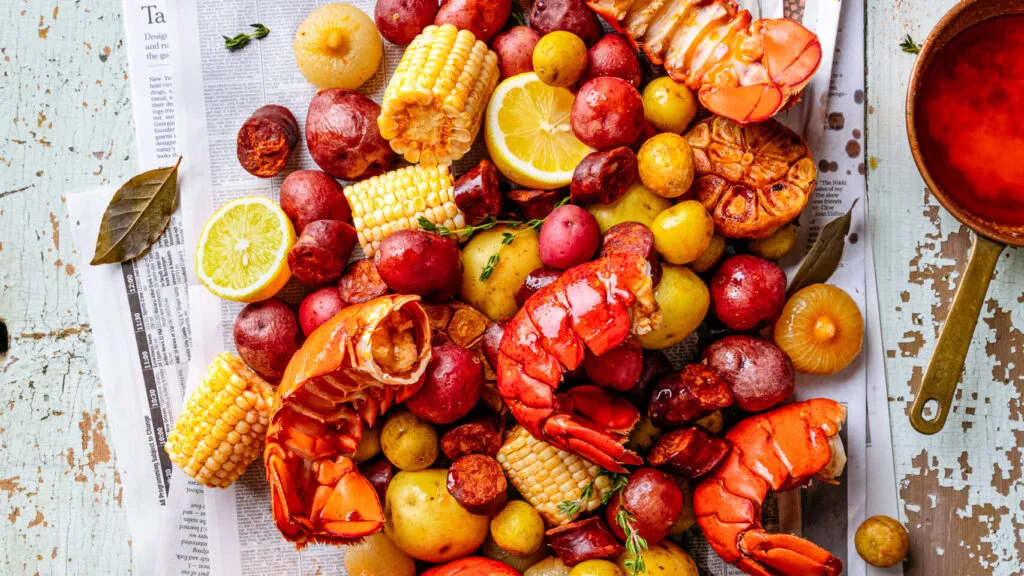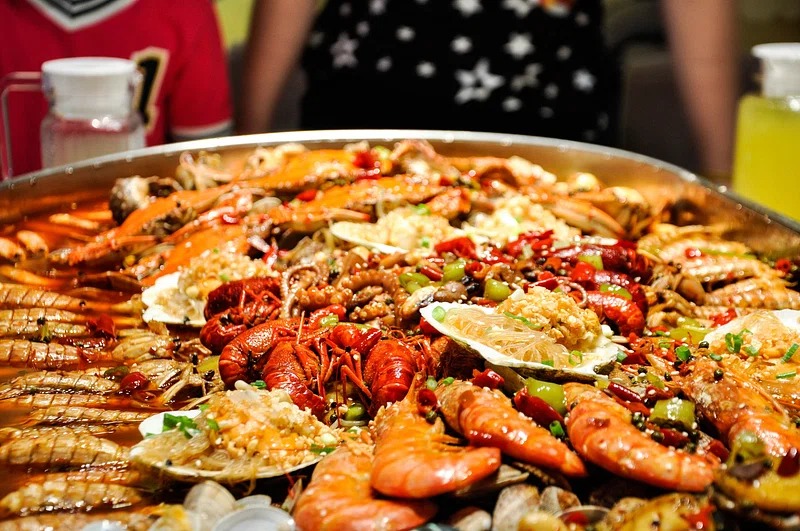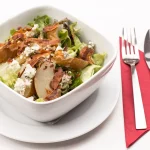The Best Fluffy Pancakes recipe you will fall in love with. Full of tips and tricks to help you make the best pancakes.
When it comes to fresh, flavorful, and healthy meals, sea fruits recipes are always a winner. Whether you love shrimp, mussels, squid, or scallops, these ocean treasures can be transformed into quick and tasty dishes that fit perfectly into busy weeknights or special occasions. The beauty of cooking sea fruits is that they don’t require long preparation — in fact, most recipes can be ready in under 30 minutes.
In this post, you’ll discover a collection of quick and easy sea fruits recipes inspired by Mediterranean flavors and coastal cuisine. From light seafood salads to creamy pasta dishes and grilled delights, there’s something here for every taste. You’ll also learn pro tips for selecting fresh ingredients, seasoning seafood perfectly, and serving it with style.
Get ready to bring the flavors of the ocean to your table with these delicious, healthy, and easy-to-make recipes.
Introduction to Sea Fruits Recipes
Sea fruits, more commonly known as seafood, are among the most versatile and flavorful ingredients in any kitchen. From shrimp, mussels, and scallops to squid, crab, and oysters, these ocean delicacies can be used to create a wide range of dishes — from quick weeknight meals to elegant dinner party recipes. Not only are sea fruits delicious, but they are also packed with protein, omega-3 fatty acids, and essential vitamins, making them a healthy choice for any diet.

Cooking sea fruits doesn’t have to be intimidating. With the right kitchen tools, fresh ingredients, and a few simple techniques, anyone can prepare tasty sea fruits recipes that are both quick and impressive. For beginners, starting with simple recipes like garlic butter shrimp, steamed mussels, or a fresh seafood salad can build confidence and develop essential cooking skills.
This section will give you a solid foundation on what sea fruits are, why they’re healthy, and how to prepare them efficiently. By understanding the basics, you’ll be ready to dive into the more exciting recipes, tips, and serving ideas in the sections that follow.
What Are Sea Fruits? (Shrimp, Mussels, Oysters & More)
Sea fruits encompass a variety of ocean foods, each with unique flavors and textures. Shrimp and scallops are tender and sweet, mussels and clams have a briny richness, while squid and octopus provide a chewy, satisfying bite. Understanding these differences helps you pair them with the right ingredients and cooking methods.
Why Sea Fruits Are a Healthy Choice for Quick Meals
Sea fruits are low in calories but high in protein, vitamins, and minerals, making them ideal for a nutritious diet. They are especially rich in omega-3 fatty acids, which support heart and brain health. Because most seafood cooks quickly, it’s perfect for weeknight meals or fast, flavorful lunches.
Quick and Easy Sea Fruits Dishes
Sea fruits are perfect for quick and flavorful meals because most seafood cooks very fast. With a few essential kitchen tools and simple ingredients, you can create delicious dishes in under 30 minutes. Below are some easy-to-make sea fruits recipes that bring the taste of the ocean straight to your table.
Essential Tools for Quick Sea Fruits Cooking:
- Large sauté pan or skillet
- Medium pot with lid (for steaming or boiling)
- Chef’s knife and cutting board
- Tongs or slotted spoon
- Mixing bowls
- Measuring cups and spoons
- Seafood cracker (for shellfish, optional)
Garlic Butter Shrimp (Serves 2)
- 250g shrimp, peeled and deveined
- 2 tablespoons butter
- 3 garlic cloves, minced
- 1 tablespoon olive oil
- 1/2 teaspoon paprika
- Salt and pepper, to taste
- 1 tablespoon fresh parsley, chopped
- 1 teaspoon lemon juice
Instructions:
- Heat butter and olive oil in a skillet over medium heat.
- Add garlic and sauté for 1 minute until fragrant.
- Add shrimp, paprika, salt, and pepper. Cook 2–3 minutes per side until pink and opaque.
- Finish with lemon juice and parsley. Serve immediately.
Steamed Mussels with White Wine (Serves 2)
- 500g fresh mussels, cleaned
- 1/2 cup dry white wine
- 1 small onion, finely chopped
- 2 garlic cloves, minced
- 1 tablespoon olive oil
- 1/4 teaspoon chili flakes (optional)
- Fresh parsley, chopped
Instructions:
- Heat olive oil in a large pot over medium heat. Sauté onion and garlic for 2 minutes.
- Add wine and bring to a simmer.
- Add mussels, cover, and steam for 5–7 minutes until shells open. Discard any unopened mussels.
- Sprinkle with parsley and chili flakes before serving.
Quick Grilled Calamari with Lemon and Herbs (Serves 2–3)
- 300g cleaned squid, cut into rings
- 2 tablespoons olive oil
- 1 teaspoon dried oregano
- Salt and pepper, to taste
- 1 tablespoon lemon juice
Instructions:
- Preheat a grill pan over medium-high heat.
- Toss squid rings with olive oil, oregano, salt, and pepper.
- Grill for 2–3 minutes per side until lightly charred and tender.
- Drizzle with lemon juice and serve hot.
Sea Fruits Salad with Fresh Vegetables (Serves 2)
- 150g cooked shrimp
- 150g cooked mussels or clams
- 1 cup cherry tomatoes, halved
- 1/2 cucumber, sliced
- 1/4 red onion, thinly sliced
- 2 tablespoons olive oil
- 1 tablespoon lemon juice
- Salt and pepper, to taste
- Fresh basil or parsley for garnish
Instructions:
- In a large bowl, combine all seafood and vegetables.
- Drizzle with olive oil, lemon juice, and season with salt and pepper.
- Toss gently and garnish with fresh herbs before serving.
Tasty Sea Fruits Recipes for Every Occasion
Sea fruits are not only perfect for quick meals but also ideal for special occasions, family gatherings, or dinner parties. With the right ingredients, seasonings, and kitchen tools, you can create dishes that are both impressive and delicious. Below are some recipes that will bring the taste of the ocean to any table.
Essential Tools for Preparing These Recipes:
- Large sauté pan or skillet
- Medium to large pot with lid (for boiling or steaming)
- Oven-safe baking dish or casserole dish
- Chef’s knife and cutting board
- Tongs and slotted spoon
- Mixing bowls
- Measuring cups and spoons
- Wooden spoon or spatula
- Blender or food processor (for sauces, optional)
Mediterranean Paella with Mixed Sea Fruits (Serves 4)
- 250g shrimp, peeled and deveined
- 200g mussels, cleaned
- 200g clams, cleaned
- 200g squid, cut into rings
- 1 1/2 cups long-grain rice
- 4 cups seafood stock
- 1 small onion, chopped
- 1 red bell pepper, chopped
- 2 garlic cloves, minced
- 1/2 cup peas (fresh or frozen)
- 2 tablespoons olive oil
- 1/2 teaspoon smoked paprika
- Pinch of saffron threads
- Salt and pepper, to taste
- Fresh parsley, chopped, for garnish
- Lemon wedges for serving
Instructions:
- Heat olive oil in a large paella pan or skillet over medium heat. Sauté onion, garlic, and bell pepper for 3–4 minutes.
- Add rice, smoked paprika, and saffron. Stir for 1–2 minutes to coat the grains.
- Pour in seafood stock, bring to a simmer, and cook uncovered for 10 minutes.
- Arrange shrimp, mussels, clams, and squid on top. Cover and cook 10–12 minutes more until rice is tender and seafood is cooked.
- Sprinkle with parsley and serve with lemon wedges.
Creamy Seafood Pasta with Shrimp and Scallops (Serves 2–3)
- 200g pasta (linguine or spaghetti)
- 150g shrimp, peeled and deveined
- 150g scallops
- 2 tablespoons butter
- 2 garlic cloves, minced
- 1/2 cup heavy cream
- 1/4 cup grated Parmesan cheese
- 1 tablespoon olive oil
- Salt and pepper, to taste
- Fresh parsley, chopped
Instructions:
- Cook pasta according to package instructions. Drain and set aside.
- Heat olive oil and butter in a skillet over medium heat. Sauté garlic for 1 minute.
- Add shrimp and scallops, cooking 2–3 minutes per side until opaque.
- Reduce heat, add heavy cream and Parmesan, and stir until sauce thickens slightly.
- Toss pasta into the sauce, season with salt and pepper, and garnish with parsley.
Bouillabaisse – French Seafood Soup (Serves 4)
- 200g cod fillet, cut into chunks
- 200g shrimp, peeled
- 150g mussels, cleaned
- 1 small onion, chopped
- 2 garlic cloves, minced
- 1 carrot, sliced
- 1 celery stalk, sliced
- 400g canned diced tomatoes
- 4 cups fish or seafood stock
- 1 teaspoon saffron threads
- 1 teaspoon dried thyme
- 2 tablespoons olive oil
- Salt and pepper, to taste
- Fresh parsley, chopped
Instructions:

- Heat olive oil in a large pot over medium heat. Sauté onion, garlic, carrot, and celery for 5 minutes.
- Add tomatoes, saffron, thyme, salt, and pepper. Simmer for 10 minutes.
- Pour in seafood stock and bring to a gentle boil.
- Add cod, shrimp, and mussels. Cover and simmer 5–7 minutes until fish is cooked and mussels open. Discard any unopened mussels.
- Sprinkle with parsley and serve with crusty bread.
Crispy Fried Calamari with Dipping Sauces (Serves 2–3)
- 300g squid, cleaned and cut into rings
- 1/2 cup all-purpose flour
- 1/4 cup cornstarch
- 1 teaspoon salt
- 1/2 teaspoon black pepper
- 1/2 teaspoon paprika
- Vegetable oil for frying
- Lemon wedges and marinara sauce for serving
Instructions:
- Heat oil in a deep pan to 180°C (350°F).
- In a bowl, mix flour, cornstarch, salt, pepper, and paprika.
- Dredge squid rings in the mixture, shaking off excess.
- Fry squid in batches for 2–3 minutes until golden and crispy. Drain on paper towels.
- Serve immediately with lemon wedges and marinara sauce.
Tips for Cooking Sea Fruits Like a Pro Chef
Cooking sea fruits doesn’t have to be intimidating. With the right techniques, fresh ingredients, and careful timing, anyone can prepare delicious, restaurant-quality seafood dishes at home. Here are some essential tips to help you cook like a professional chef and make the most of your sea fruits recipes.
1. Choose Fresh Sea Fruits
The foundation of any great seafood dish is freshness. Always look for:
- Shrimp: Firm texture, translucent color, and no strong fishy smell.
- Mussels and Clams: Closed shells; discard any that are cracked or remain open.
- Squid and Octopus: Smooth, shiny surface and mild ocean scent.
- Scallops: Firm, slightly translucent, with no off odor.
Tip: Buy seafood from reputable markets, and if possible, cook it the same day you purchase it. Fresh seafood ensures better flavor, texture, and safety.
2. Master Cooking Times
Sea fruits cook quickly, and overcooking is the most common mistake. Approximate cooking times:
- Shrimp: 2–3 minutes per side until pink and opaque.
- Scallops: 2–3 minutes per side until golden and firm.
- Mussels and Clams: 5–7 minutes steaming until shells open.
- Squid/Calamari: 1–2 minutes high-heat sauté for tender texture (or slow-cook 30–40 minutes for stew).
Tip: Always watch seafood closely — it’s done as soon as it turns opaque (shrimp, scallops) or shells open (mussels, clams).
3. Season and Flavor Properly
Simple seasonings let the natural flavors of the sea shine:
- Olive oil, butter, garlic, and fresh herbs (parsley, basil, thyme) work for most recipes.
- Citrus juice (lemon or lime) brightens flavors and balances richness.
- Spices like paprika, chili flakes, or saffron can add depth without overpowering seafood.
Tip: Taste and adjust seasoning gradually — seafood should be light, fresh, and flavorful, not overly salted or spiced.
4. Use the Right Cooking Methods
Different sea fruits respond better to certain methods:
- Sautéing: Shrimp, scallops, and squid — quick, high heat.
- Steaming: Mussels, clams — retains moisture and delicate flavors.
- Grilling: Squid, shrimp, lobster — adds smoky flavor.
- Baking/Roasting: Shellfish with sauces, seafood casseroles — ideal for special occasions.
Tip: Use a heavy-bottom pan for even heat and avoid overcrowding the pan — cook in batches if necessary.
5. Don’t Forget Presentation
Professional chefs know that we eat with our eyes first. Simple tips:
- Garnish with fresh herbs and citrus wedges.
- Serve on colorful plates or a seafood platter.
- Drizzle with a bit of olive oil or sauce just before serving.
Tip: Use white plates to make seafood colors pop — the vibrant pinks, oranges, and greens look irresistible.
6. Storage and Safety
- Store fresh seafood in the coldest part of the fridge (0–4°C) and cook within 24 hours.
- Cooked seafood can be stored in an airtight container in the fridge for 2–3 days.
- Freeze seafood that won’t be used immediately, but avoid multiple freeze-thaw cycles.
Tip: Always rinse shellfish under cold water and remove beards (for mussels) before cooking.
Serving Ideas and Storage Tips
Serving sea fruits isn’t just about cooking them perfectly — presentation, side dishes, and proper storage all enhance the dining experience. With the right serving ideas and storage tips, you can enjoy fresh, flavorful seafood meals any time.
1. Pairing Sea Fruits Recipes with Side Dishes and Drinks
- Light Salads: A simple green salad with olive oil, lemon, and fresh herbs complements rich seafood dishes like garlic butter shrimp or creamy seafood pasta.
- Grains and Starches: Serve seafood over steamed rice, couscous, or pasta to make the meal filling. Example: Mediterranean paella works beautifully with a light arugula salad on the side.
- Vegetable Sides: Roasted vegetables, grilled asparagus, or sautéed spinach pair well with almost any seafood dish.
- Bread and Dipping Sauces: Crusty bread or baguette slices are perfect for dipping into bouillabaisse or garlic butter sauces.
- Beverages: Light white wines (Sauvignon Blanc, Pinot Grigio), sparkling water with lemon, or herbal iced teas complement seafood without overpowering flavors.
Tip: Keep flavors fresh and balanced — seafood is naturally delicate, so avoid heavy, overpowering sides.
2. Creative Ways to Serve a Sea Fruits Platter
- Mixed Seafood Platter: Arrange shrimp, mussels, scallops, and squid on a large platter with lemon wedges, fresh parsley, and small bowls of dipping sauces like garlic butter, aioli, or marinara.
- Individual Plates: Serve seafood dishes individually, garnished with herbs, citrus slices, and a drizzle of olive oil for a fine-dining feel at home.
- Layered Seafood Salad: Combine cooked seafood with fresh vegetables, toss in olive oil and lemon dressing, and serve in clear bowls for a visually appealing layered effect.
Tip: Use a variety of colors and textures to make the dish visually striking — presentation enhances the overall dining experience.
3. How to Store Leftover Sea Fruits Safely
- Refrigeration: Store cooked seafood in an airtight container in the fridge for up to 2–3 days. Make sure your fridge is at 0–4°C for safety.
- Freezing: Freeze fresh or cooked seafood that won’t be eaten within 1–2 days. Use a vacuum-sealed bag or airtight container. Avoid multiple freeze-thaw cycles to maintain texture.
- Raw Seafood Storage: Keep raw seafood cold in the fridge and cook within 24 hours. Store shellfish on ice in a bowl, loosely covered with a damp cloth, until ready to cook.
Tip: Label containers with the date, so you know when to consume leftovers. Never eat seafood that smells off or looks slimy — freshness is key.
4. Reheating Tips to Keep Sea Fruits Fresh and Tasty
- Stovetop: Gently reheat in a skillet with a splash of water, broth, or olive oil over medium-low heat.
- Oven: Wrap in foil and warm at 150–160°C (300–320°F) for 5–10 minutes to avoid drying out.
- Avoid Microwave: Microwaving can make seafood rubbery or overcooked.
Tip: Add a squeeze of lemon or a small knob of butter when reheating to restore flavor and moisture.





